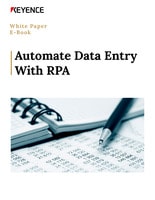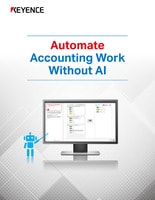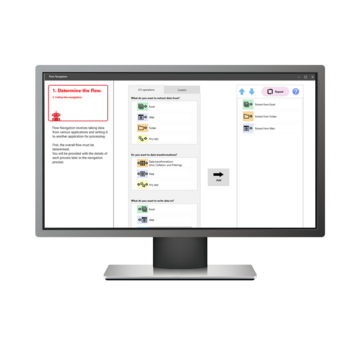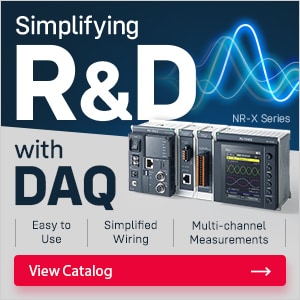RPA (Robotic Process Automation)
Data Entry and Data Migration Automation with RPA

Data entry and data migration are crucial activities in nearly every business function, but they can also be incredibly time-consuming and error-prone. Whether you're transferring data between systems, entering customer information into databases, or migrating large volumes of data to new platforms, manual processes create bottlenecks and risks of inaccuracies. Robotic Process Automation (RPA) can help solve these problems by automating the entire data entry and migration process.
With RPA, you can automate repetitive and high-volume tasks, such as entering data from documents, transferring data between systems, and updating records. This reduces the risk of human errors, speeds up processes, and allows your team to focus on more strategic and valuable activities.
Discover more about this product.
Click here to book your demo.

Common Challenges in Data Entry and Migration
Human Error in Manual Data Entry
Manual data entry is highly susceptible to mistakes, whether due to fatigue, misreading, or simple oversight. Even small errors in data entry can have significant repercussions, such as incorrect financial reports or customer information. RPA minimizes human involvement by automating the entry of data, ensuring greater consistency and accuracy.
Data Transfer Between Disparate Systems
Many businesses rely on different software and systems to manage various functions, which can create challenges when trying to transfer data between them. The manual process of data migration can be slow, inefficient, and fraught with risks of incomplete or corrupted data. RPA can facilitate seamless data transfers between systems, ensuring consistency and integrity across platforms.
Data Overload During Migration Projects
Migrating large volumes of data, especially during system upgrades or mergers, can overwhelm staff and lead to missed deadlines or incomplete transfers. RPA can handle massive datasets at speed and scale, ensuring all data is transferred and updated correctly without human intervention.
Lack of Real-Time Data Access and Insights
In many organizations, data entry and migration tasks are done manually, limiting the ability to gain real-time insights into how data is being processed. RPA provides up-to-date tracking, allowing you to monitor progress, detect errors, and make adjustments as needed.
Compliance and Accuracy Risks
In industries such as healthcare, finance, and legal services, data accuracy and compliance are paramount. Data entry errors or incomplete migrations can result in serious legal, financial, or regulatory consequences. By automating data processes, RPA ensures greater compliance with industry standards and reduces risks associated with incorrect or incomplete data.
Benefits of RPA for Data Entry and Data Migration
- Faster Data Processing: Automating data entry and migration processes accelerates tasks that would normally take hours or days to complete manually. RPA can perform data transfers in a fraction of the time.
- Improved Accuracy: By eliminating manual intervention, RPA minimizes the risk of errors, ensuring that your data is accurate and consistent across systems.
- Cost Savings: Automating labor-intensive processes reduces the need for manual resources and minimizes the time spent on data entry, freeing up staff to focus on more high-value work.
- Enhanced Data Integrity: RPA ensures that data is transferred and updated without missing records or corrupted data, improving overall data integrity.
- Better Compliance and Security: With automated processes, organizations can ensure that all data entry and migration activities are done in accordance with regulatory standards, reducing compliance risks.
Key RPA Use Cases for Data Entry and Migration
- Automated Data Extraction from Documents: RPA can read data from invoices, purchase orders, and other documents, extracting key information such as names, addresses, and transaction details and entering it into the appropriate database.
- Migrating Data Between Systems: RPA can facilitate data migration by transferring data from one system to another, ensuring that the process is completed on time and without errors.
- Data Cleansing: RPA can clean and standardize data during migration, ensuring that there are no discrepancies or inconsistencies before the data is transferred to its new destination.
- Reporting and Monitoring: RPA can generate reports on the status of data migration projects, highlighting any issues or bottlenecks that need to be addressed.
Integrating RPA into Data Entry and Migration Systems
RPA can integrate seamlessly with a variety of data management tools and platforms, including enterprise resource planning (ERP) systems, customer relationship management (CRM) software, and databases. Integration with popular platforms as well as homegrown solutions allows businesses to automate data entry and migration tasks within their existing infrastructure.
By implementing RPA, businesses can ensure a smoother transition during data migrations, enhance the accuracy of data entry, and maintain consistent data quality across systems.
Who Benefits the Most?
- IT Teams: Automate the process of data transfer and system integration, reducing manual effort and improving data integrity.
- Finance Teams: RPA helps eliminate manual data entry errors, ensuring that financial records and reports are accurate and compliant.
- HR Departments: Automate data entry for employee records, payroll systems, and benefits data to reduce administrative workload and improve data accuracy.
- Project Managers: Manage large-scale data migration projects with ease by automating data extraction, transformation, and loading (ETL) processes, ensuring smooth transitions and on-time completion.
By automating data entry and migration with RPA, businesses can save time, reduce costs, and improve data accuracy, ensuring that systems are up-to-date and ready to support strategic decision-making.
FAQs
How Does RPA Improve Data Entry Processes?
RPA automates the extraction and input of data into systems, reducing human errors and speeding up data entry tasks. This improves accuracy and allows businesses to handle larger volumes of data more efficiently.
What Types of Data Migration Projects Can RPA Assist with?
RPA is ideal for automating data migration during system upgrades, mergers, or cloud transitions. It can also be used for transferring data between systems that do not have API connections.
How Does RPA Ensure Compliance During Data Migration?
RPA ensures that data migration processes follow predefined rules and industry standards, reducing the risk of non-compliance or data loss.
We’re here to provide you with more details.
Reach out today!

Related Downloads
Related Products
Scroll




